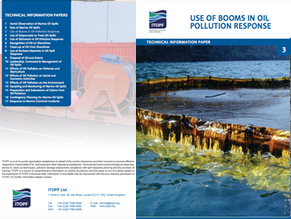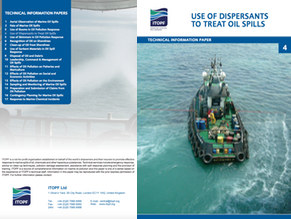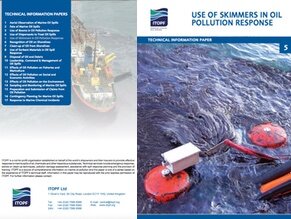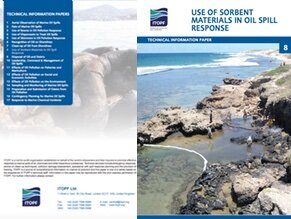Response Techniques
Once oil is spilled at sea, it will naturally spread, fragment and disperse under the influence of wind, waves and currents.
For spills in coastal waters, the oil will often drift towards the shore and become stranded due to the action of waves and tides. In order to contain the oil at the spill site, recover the oil floating on the sea and clean-up any oil that might become stranded on the shore, there are a variety of techniques that can be employed. The prevailing weather and sea conditions, the characteristics of the oiled shoreline and the nature of the oil can all combine to pose challenges to any clean-up operation.
At-Sea Response

Several options are available to respond to oil at sea and can be considered in three broad strategies; containment and recovery, in-situ burning and dispersant application. The selection of the most appropriate strategy will depend on many factors, including; the response resources available, the national and local regulations on oil spill response, the spill scenario and the physical and ecological characteristics of the area impacted by the spill.
Shoreline Clean-Up and Response

The majority of ship-source oil spills occur close to the coast and, as a result, many spills result in contamination of shorelines. Oil reaching stranding on the shore can cause significant environmental and economic impacts and may also largely determine the political and public perception of the scale of the incident, as well as the over costs.
When oil does reach the shoreline, considerable effort may be required to clean the affected areas. It is therefore essential that comprehensive and well-rehearsed arrangements for shoreline clean-up are included in contingency plans. The techniques available for shoreline clean-up are relatively straightforward and do not normally require specialised equipment. However, inappropriate techniques and poor organisation can aggravate the impacts caused by the oil itself.
Explore Documents on Response Techniques
01 海洋油类泄漏的空中观察
本技术资料论文就如何开展有效的空中勘测提供建议和指导。
Categories: Fate of Oil Spills, Response Techniques, Planning & operations, Spill Response, Technical Information Paper (TIPS)
03 油类污染应对措施中的栅栏应用
本篇论文介绍了栅栏设计的原理以及两种主要的操作模式,即在海上采取用船只拖拽的做法、 在浅水或近海海域则采取下锚的做法。
Categories: Response Techniques, Containment & Recovery, Planning & operations, Technical Information Paper (TIPS)
04 使用分散剂处理油类泄漏
本篇论文概述了如何对浮油使用消散剂以及具体的使用限制,使用消散剂是漏油源为船只的 海上油类泄漏事件的诸多可选应对方案中的一种。
Categories: Response Techniques, Dispersants, Technical Information Paper (TIPS)
05 油类污染应对措施中的撇浮装置应用
本篇论文介绍了在油类泄漏期间最有可能遇到的情况中成功使用撇浮装置的基本要求, 应将本篇论文与本系列中的其他国际油轮船东污染组织 (ITOPF) 论文结合起来阅读, 尤其是关于栅栏使用、海岸线清理方法和油类处置的论文。
Categories: Response Techniques, Containment & Recovery, Planning & operations, Technical Information Paper (TIPS)
06 海岸线油类识别
如果是大规模泄漏,搁浅的油类的来源可能很明显,但在涉及的油量很少且要就损害或清理 成本寻求赔偿时,经常会出现认定问题。本篇论文旨在帮助读者认定不同海岸线上的油的类 型和数量。
Categories: Response Techniques, Planning & operations, Technical Information Paper (TIPS)
07 海岸线油类清理
本篇白皮书介绍常用的海岸线清理方法,并针对各种不同海岸线就哪些方法最合适作 业的每个阶段提供建议。
Categories: Response Techniques, Technical Information Paper (TIPS)
08 油类泄漏应对措施中的吸附剂材料应用
本文讨论可以使用的吸油物类型及在应对措施中可以如何有益地使用。本文应与本系列的其 它 ITOPF 论文一起阅读,尤其是关于浮木档栅应用、撇浮装置应用、海岸线清理技术及油类 和残片弃置的部分。
Categories: Response Techniques, Technical Information Paper (TIPS)







